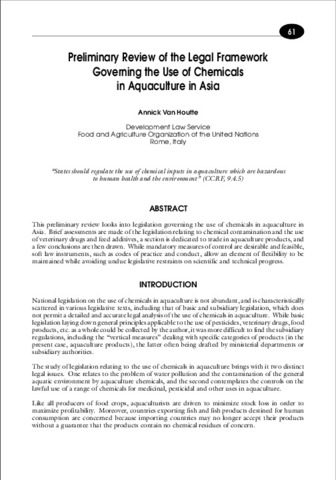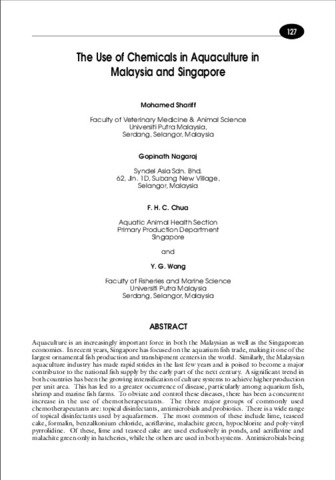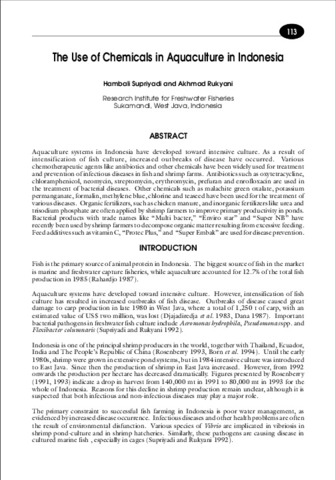Guidelines for the use of chemicals in aquaculture and measures to eliminate the use of harmful chemicals
- Global styles
- MLA
- Vancouver
- Elsevier - Harvard
- APA
- Help

Download URL
asean.orgDate
2013Page views
2,390ASFA keyword
AGROVOC keyword
Metadata
Show full item record
Share
Abstract
This set of guidelines has been developed to help national regulators and stakeholders on managing the diverse use of chemicals in aquaculture. It recognising the existing variation in capacity among AMS but has been designed so that it could be adopted and implemented within the specific policy and legal framework of each country.
This document aims to provide guidance for Competent Authorities (CAs) in standards setting / regulating the use of Chemicals in Aquaculture and Measures to Eliminate the Use of Harmful Chemical among AMS. AMS are encouraged to assess and review gaps at their national level with regard to chemicals used in aquaculture, as listed in this document.
Furthermore, it would also help to develop measures to eliminate the use of harmful chemicals in aquaculture; and it is further envisaged that a harmonised regional set of guidelines for the use of chemicals in aquaculture for ASEAN could be produced.
The purpose of this set of guidelines is to list the major chemicals and other substances commonly used in AMS. This set of guidelines will also list the banned chemicals that should not be used or practiced by farmers or aquaculturist in all AMS. The list was compiled and agreed from previous workshops to assess and review gaps exist among AMS with regards to chemical use in aquaculture.
Suggested Citation
ASEAN. (2013). Guidelines for the use of chemicals in aquaculture and measures to eliminate the use of harmful chemicals. Association of Southeast Asian Nations.
Type
BookISBN
9786027643642
Related items
Showing items related by title, author, creator and subject.
-
Preliminary review of the legal framework governing the use of chemicals in aquaculture in Asia
Van Houtte, Annick (Aquaculture Department, Southeast Asian Fisheries Development Center, 2000)This preliminary review looks into legislation governing the use of chemicals in aquaculture in Asia. Brief assessments are made of the legislation relating to chemical contamination and the use of veterinary drugs and ... -
The use of chemicals in aquaculture in Malaysia and Singapore
Mohamed, Shariff; Nagaraj, Gopinath; Chua, F. H. C.; Wang, Y. G. (Aquaculture Department, Southeast Asian Fisheries Development Center, 2000)Aquaculture is an increasingly important force in both the Malaysian as well as the Singaporean economies. In recent years, Singapore has focused on the aquarium fish trade, making it one of the largest ornamental fish ... -
The use of chemicals in aquaculture in Indonesia
Supriyadi, Hambali; Rukyani, Akhmad (Aquaculture Department, Southeast Asian Fisheries Development Center, 2000)Aquaculture systems in Indonesia have developed toward intensive culture. As a result of intensification of fish culture, increased outbreaks of disease have occurred. Various chemotherapeutic agents like antibiotics and ...




